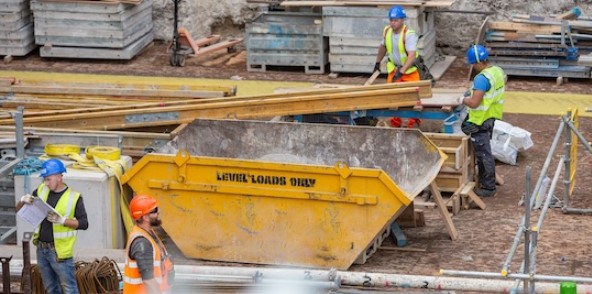What is a Construction Site Waste Management Plan?
A Construction Site Waste Management Plan (SWMP) is a strategic document that outlines how waste will be managed on a construction site. It includes methods for reducing, reusing, recycling, and properly disposing of waste generated during the construction process. SWMPs are not only vital for environmental sustainability but also for ensuring regulatory compliance, cost efficiency, and safe working conditions.
Why is Waste Management Important in Construction?
Construction activities produce significant amounts of waste—such as concrete, wood, metals, packaging materials, and hazardous substances. Poor waste management can lead to:
- Increased project costs
- Delays in construction
- Environmental degradation
- Safety hazards for workers
- Non-compliance with local laws
A well-designed waste management plan helps minimize these risks and contributes to a more sustainable construction industry.
Key Components of a Construction Site Waste Management Plan
Here’s what a typical SWMP should include:
1. Project Details
- Name and address of the project
- Description of the project (residential, commercial, industrial)
- Estimated timeline and duration
2. Waste Types and Sources
Identify the types of waste likely to be generated:
- Concrete and bricks
- Timber and plasterboard
- Metals
- Packaging (plastic, cardboard)
- Paint, adhesives, and solvents
3. Waste Reduction Strategies
This includes planning to reduce waste at the source. For example:
- Use prefabricated components
- Accurate material ordering to avoid over-purchasing
- Use recyclable and sustainable materials
4. Waste Segregation and Storage
Clearly define how and where waste will be sorted and stored on-site:
- Separate bins or containers for wood, metal, plasterboard, etc.
- Hazardous waste storage and labeling
- Secure areas to avoid illegal dumping or contamination
5. Reuse and Recycling Plan
Identify items that can be:
- Reused on-site (e.g., formwork, pallets)
- Returned to suppliers
- Sent to recycling facilities
6. Waste Disposal
For waste that cannot be reused or recycled:
- Use licensed waste carriers
- Document disposal methods
- Keep records of quantities and destinations
7. Roles and Responsibilities
Assign responsibility to individuals or teams:
- Site manager to oversee the waste plan
- Workers trained in waste handling and segregation
- Regular audits to ensure compliance
8. Monitoring and Documentation
- Maintain a waste log with details of types and quantities
- Schedule regular checks and updates to the SWMP
- Report findings at the end of the project
Benefits of Implementing a SWMP
✅ Environmental Protection: Reduces landfill waste and pollution
✅ Cost Savings: Efficient use of materials and less disposal costs
✅ Legal Compliance: Meets local waste regulations and building codes
✅ Improved Reputation: Demonstrates commitment to sustainability
✅ Safer Sites: Organized waste handling reduces accidents
Legal Requirements (May Vary by Region)
In some countries, having a SWMP is legally required for large-scale construction projects. Even if it’s not mandatory, many contractors adopt SWMPs voluntarily as a best practice.
For example:
- UK: SWMPs were previously mandatory for projects over £300,000.
- USA: Many states require waste management under LEED or local Green Building codes.
- Pakistan & India: Urban development authorities may require plans for large-scale projects.
Final Thoughts
A Construction Site Waste Management Plan is not just a paperwork exercise—it’s a crucial part of responsible and efficient construction. Whether you’re managing a small residential build or a massive commercial development, an SWMP ensures that your project is eco-friendly, safe, and cost-effective.
Plan Smart. Build Clean. Waste Less.
